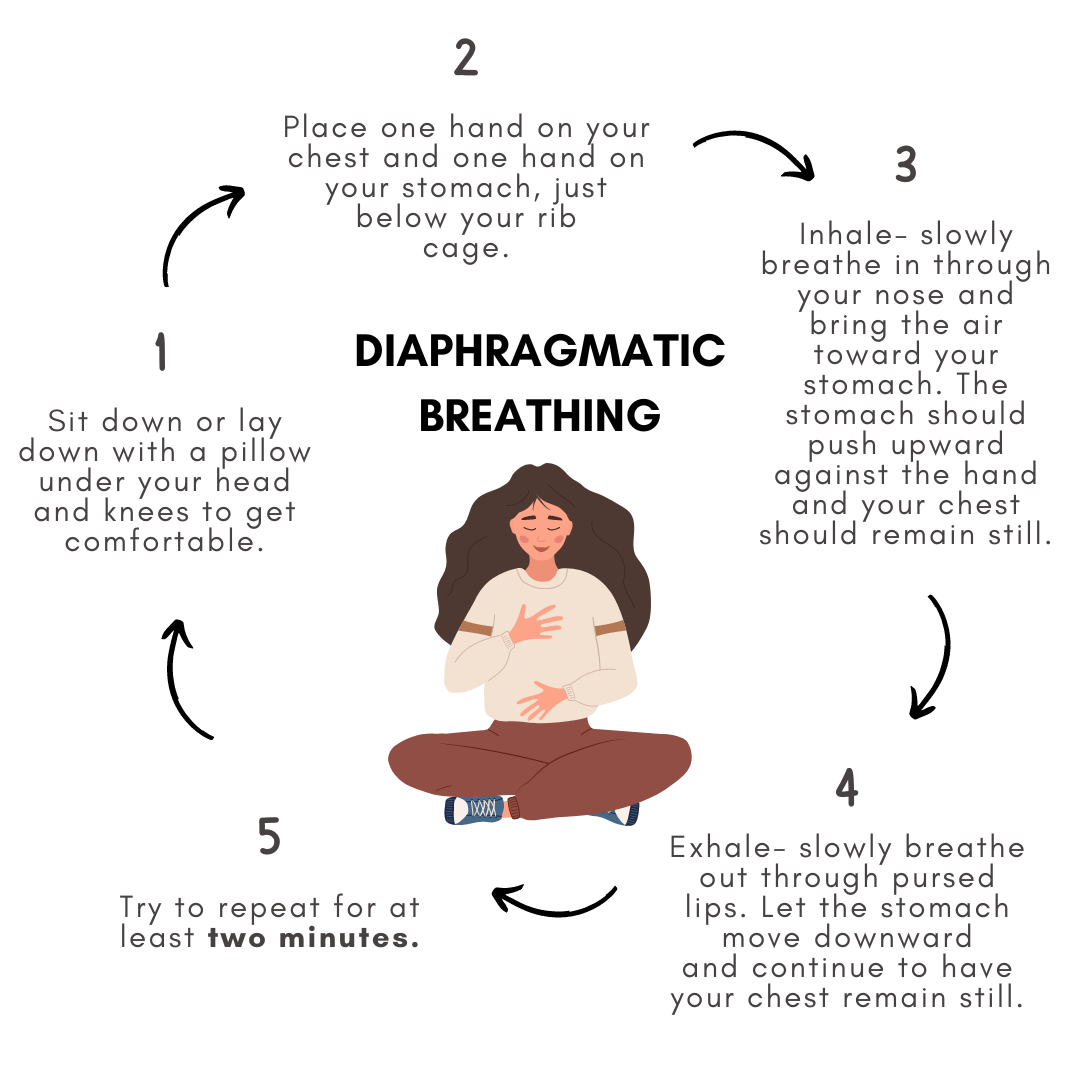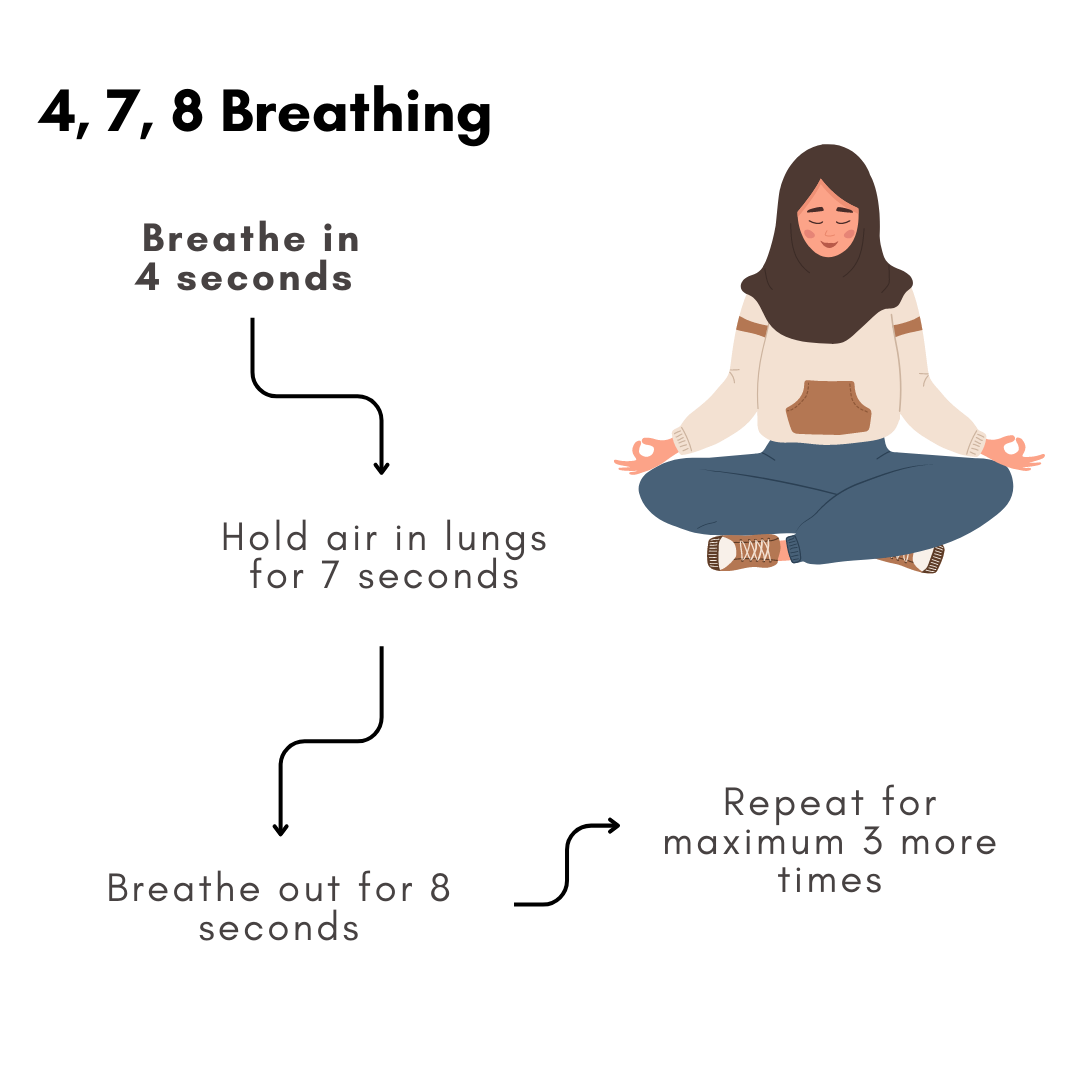
The Nervous System
Our Sympathetic nervous system activates the “fight or flight” response when it senses a threat or if there is stress. This leads to feelings of stress/anxiety and causes increased heart rate and muscle tension. Sometimes our bodies can get stuck in this “fight or flight” response, leading to a constant feeling of stress and anxiety. This can be common in individuals who have experienced trauma, such as a car accident. Unfortunately, when our bodies are stuck in the “fight or flight” response, it can have a negative impact on things like sleep, cognition, and pain.
On the other hand, our Parasympathetic nervous system leads to a sense of calm when activated. It is also known as the “rest and digest” system. The system is typically activated when there is no threat or stress.
Breathing & The Nervous System
- When we breathe in, the sympathetic nervous system is activated.
- When we breathe out, the parasympathetic nervous system is activated. In other words, when we breathe in our bodies tense up, and when we breathe out, we are releasing all of those tensions, leading to a sense of calm. In fact, if our body is tense, our brain can sense it and will activate a stress response. So, by performing breathing exercises, we actively calm the body and tell our brain that it does not need to activate the stress response.
Breathing Techniques
Diaphragmatic breathing/Belly breathing
- Lay down with a pillow under your head and knees to get comfortable.
- Place one hand on your chest and one hand on your stomach, just below your rib cage.
- Inhale- slowly breathe in through your nose and bring the air toward your stomach. The stomach should push upward against the hand and your chest should remain still.
- Exhale- slowly breathe out through pursed lips. Let the stomach move downward and continue to have your chest remain still.
- Try to repeat for at least two minutes.

BoxBreathing
- Breathe in slowly through your nose for 4 seconds
- Hold your breath in for 4 seconds
- Breathe out slowly through your nose for 4 seconds
- Hold your lungs empty for 4 seconds

4,7,8 Breathing
- Breathe in for 4 seconds
- Hold air in lungs for 7 seconds
- Breathe out for 8 seconds
- Repeat for a maximum of 3 more times
**The longer exhale helps to activate your parasympathetic nervous system, which will help lead to a sense of calm.

Important Notes:
- There are many different breathing strategies- Not all will be effective for you so try to find a strategy or two that works best for you.
- Breathing takes practice- think of breathing like the gym: the more you practice the stronger you will get, which will make breathing exercises easier.
Additional Resources:
- Diaphragmatic breathing: https://www.youtube.com/watch?v=0Ua9bOsZTYg
- Box breathing: https://www.youtube.com/watch?v=AOL3isokmY4
- 4,7,8 breathing: https://www.youtube.com/watch?v=1Dv-ldGLnIY
References:
- Derochie, A. (2020, October 20). Breathing: Why you should teach breathing and how to do it! [ Webinar]. Canadian Association of Occupational Therapists.
- https://www.cordem.org/globalassets/files/academic-assembly/2017-aa/handou ts/day-three/biofeedback-exercises-for-stress-2—fernances-j.pdf
- https://www.medicalnewstoday.com/articles/diaphragmatic-breathing#how-to- do-it

